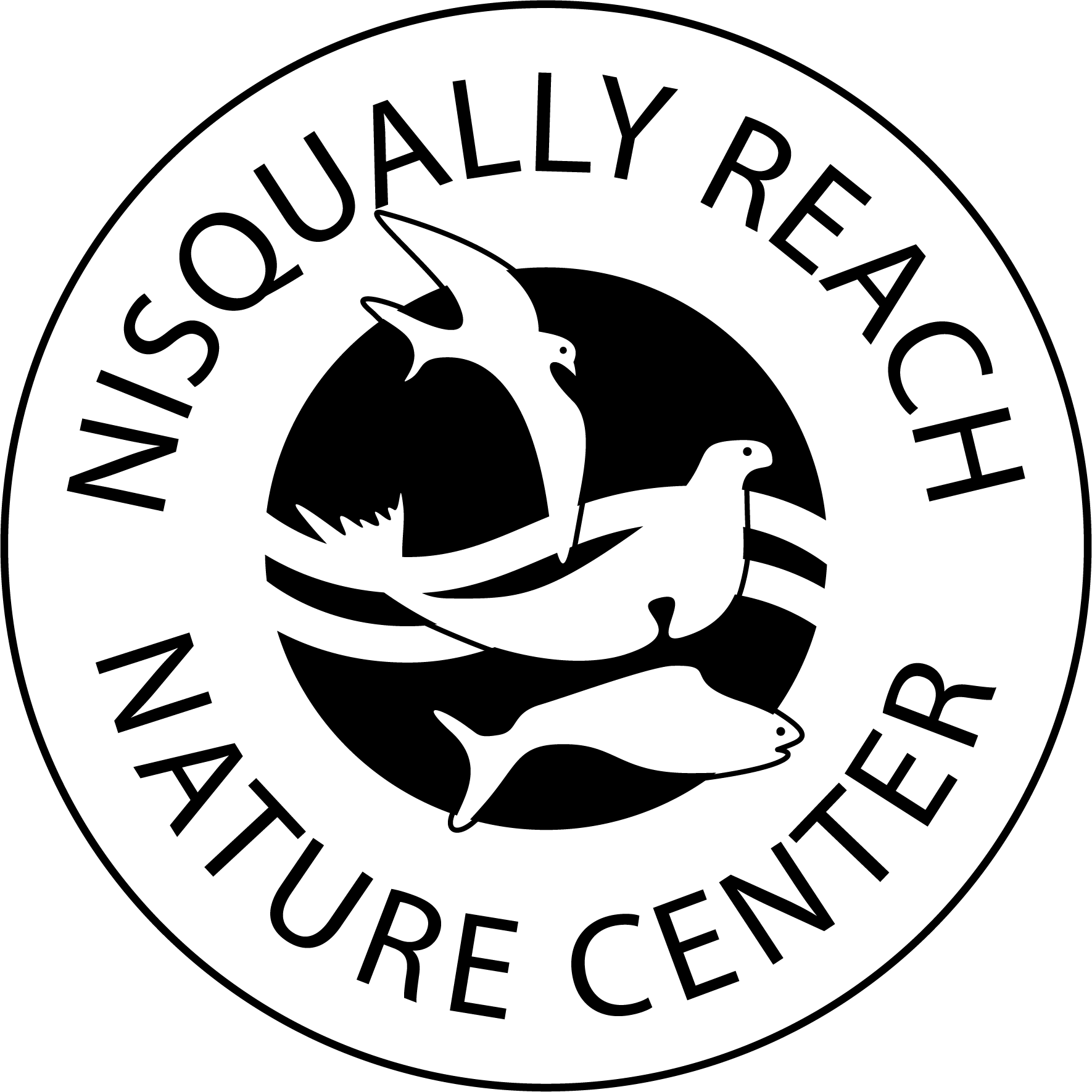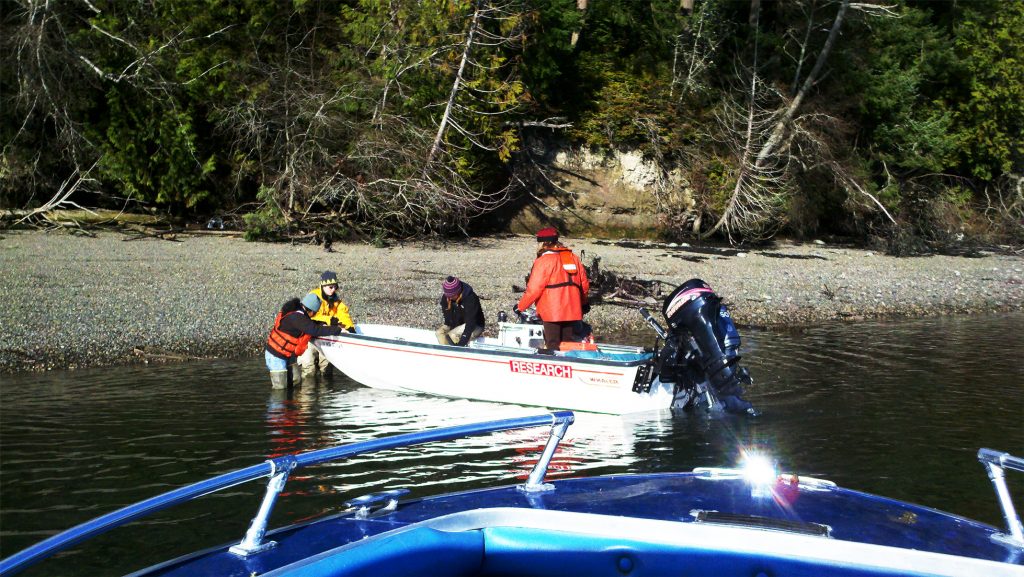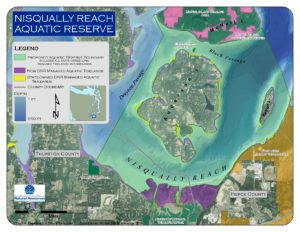Aquatic Reserve Expansion 2020
What is an Aquatic Reserve?
The Nisqually Reach Aquatic Reserve (NRAR) is part of the Washington Department of Natural Resources (DNR) Aquatic Reserves Program. DNR establishes aquatic reserves throughout the state to protect important native aquatic ecosystems. An aquatic reserve can be designated for any of the following purposes, singly or in combination: educational, environmental, or scientific.
Educational reserves are accessible areas of aquatic lands typical of selected habitat types which are suitable for educational projects. Environmental reserves are areas of environmental importance, sites established for the continuance of environmental baseline monitoring, and/or areas of historical, geological or biological interest requiring special protective management. Scientific reserves are sites set aside for scientific research projects and/or areas of unusually rich plant and animal communities suitable for continuing scientific observation.
NRAR was designated as an educational, environmental, and scientific reserve. DNR’s Aquatic Reserve Program brings together local and state governments, non-governmental organizations, Tribes, and citizens to develop and carry out site-specific management plans to protect the aforementioned values.
For more information: DNR Nisqually Aquatic Reserve
The Management Plan: Nisqually Aquatic Reserve Plan
History on the Nisqually Reach Aquatic Reserve
On Friday, September 9, 2011, Commissioner of Public Lands Peter Goldmark signed the Nisqually Reach Aquatic Reserve Order and Management Plan. This was quite an achievement and well deserving of celebration: the culmination of four years of hard work by NRNC staff, board members, and volunteers who spent countless hours collecting data, writing and rewriting drafts of management plan language for discussion with stakeholders, and navigating some of the internal politics of the Department of Natural Resources (DNR).
Ongoing monitoring projects associated with the delta restoration took on a broader focus as the U.S. Geological Survey (USGS) began coordinating data collection efforts with NRNC’s Executive Director, Daniel Hull, on the bathymetry and grain size of the benthos (bottom sediment) beyond the submarine delta. This study will help to narrow search grids for later SCUBA and Remotely Operated Vehicle characterization of benthic habitats and species. Local volunteer divers began to coordinate dive locations to describe the fish, invertebrates, algae species and other characteristics of the USGS data collection sites.
The reserve designation also enabled DNR to bring new funding for a comprehensive fish use survey by expanding the Nisqually Tribe’s ongoing fish use survey of the delta and nearby shorelines to the entire aquatic reserve and beyond, even to the other shorelines of McNeil Island.
The Center has attracted new potential donors that appreciate the work we do and the excitement the aquatic reserve brings. Organizations and agencies around the reserve are better partnering and communicating with us about issues that might positively or negatively affect the reserve. The Anderson Island Park and Recreation District partnered with the Nisqually Land Trust and Forterra to acquire an undeveloped parcel of land surrounded by Jacobs Point Park in Oro Bay on Anderson Island for the preservation of habitats and species within the reserve.
What is the Aquatic Reserve Citizen Stewardship Committee (CSC)?
A citizen group whose mission is to conserve the unique habitats, plants, and animals of the Nisqually Reach Aquatic Reserve through leadership in scientific monitoring, environmental literacy, citizen education, local stewardship, and cooperation with governmental and nongovernmental agencies. For minutes of meeting and our charter information, click here.
How can I get involved?
The CSC meets once a month to discuss current updates from NRNC staff on issues concerning the aquatic reserve. If you are interested in joining the Aquatic Reserve Committee, email the Nature Center or call us at (360) 459-0387. For more information about Washington State Aquatic Reserves, visit www.aquaticreserves.org or check out our Facebook page! Become a part of protecting one of Puget Sound’s most special places, investigating the mysteries of the deep in our own back yard, and teaching the next generation.


